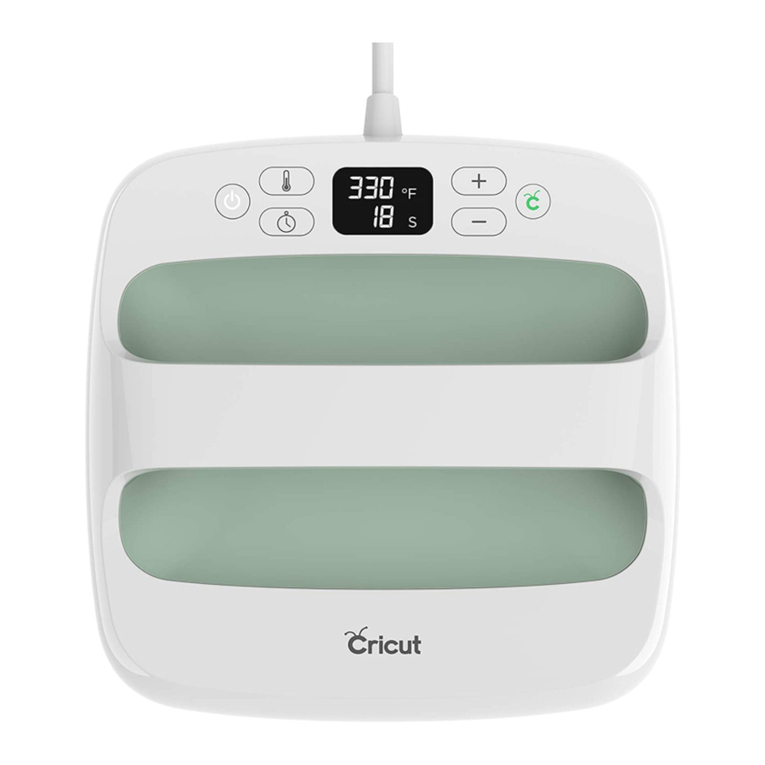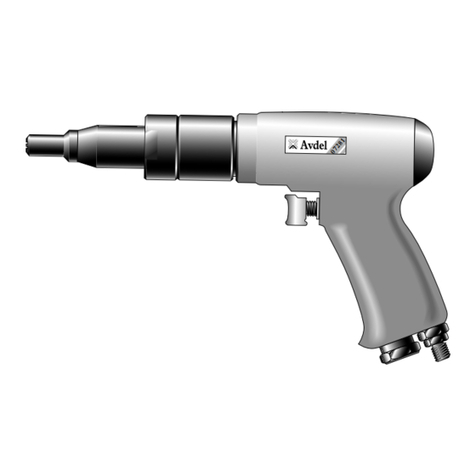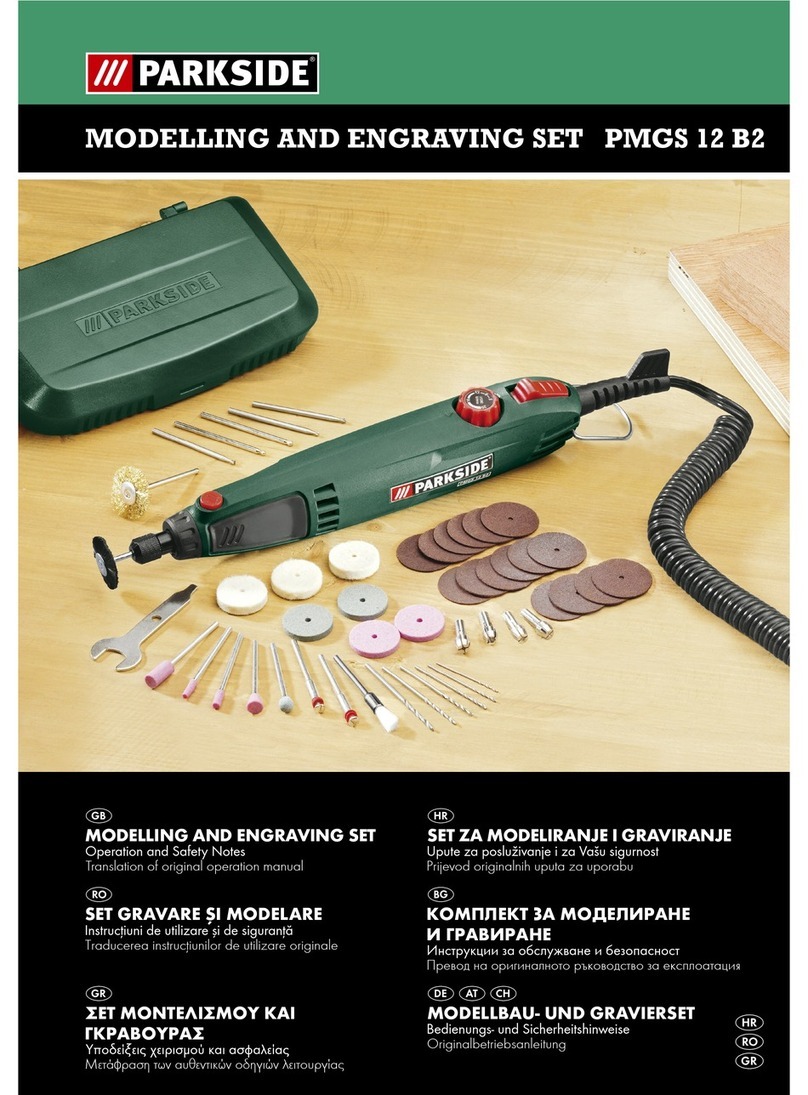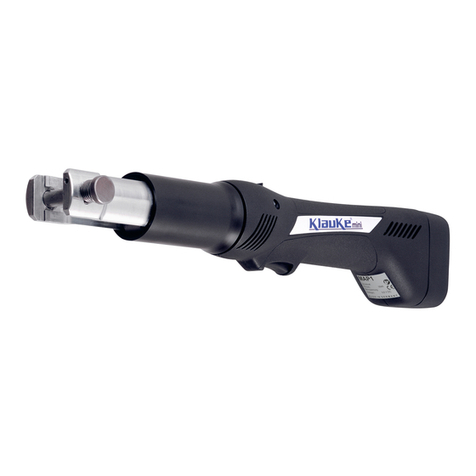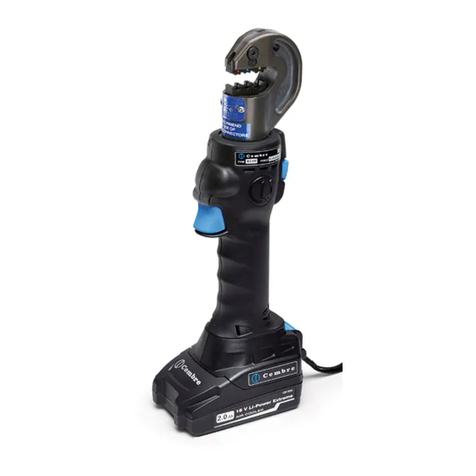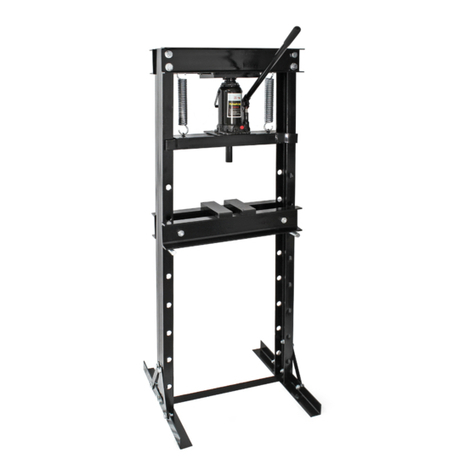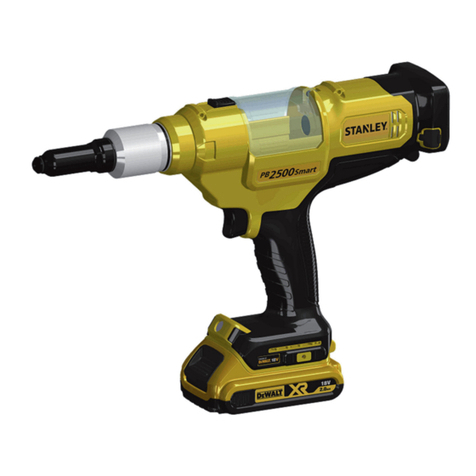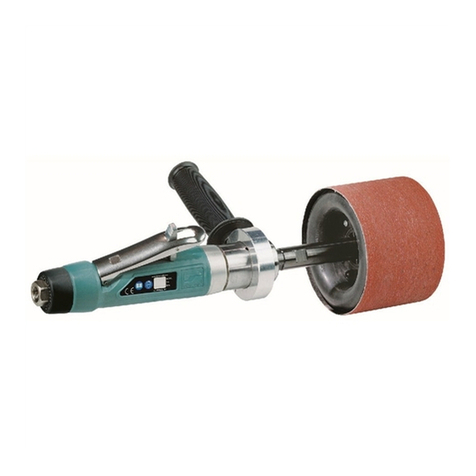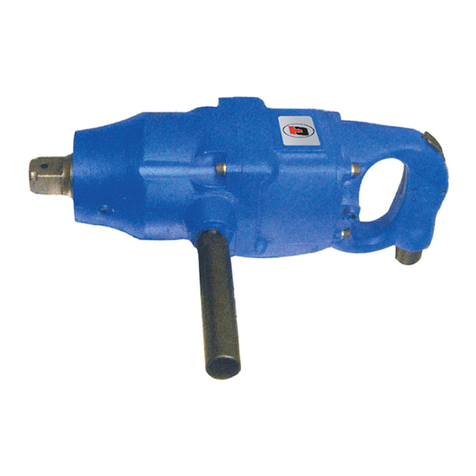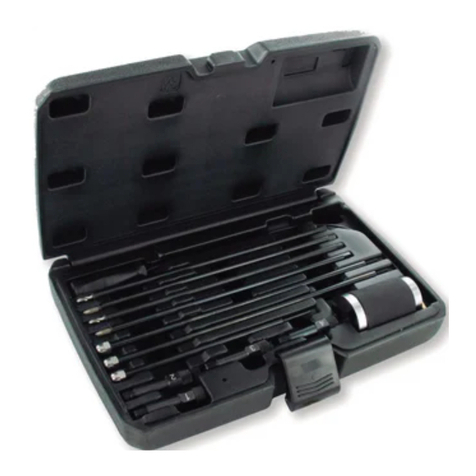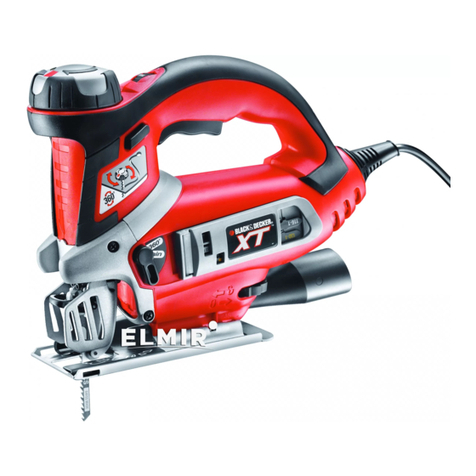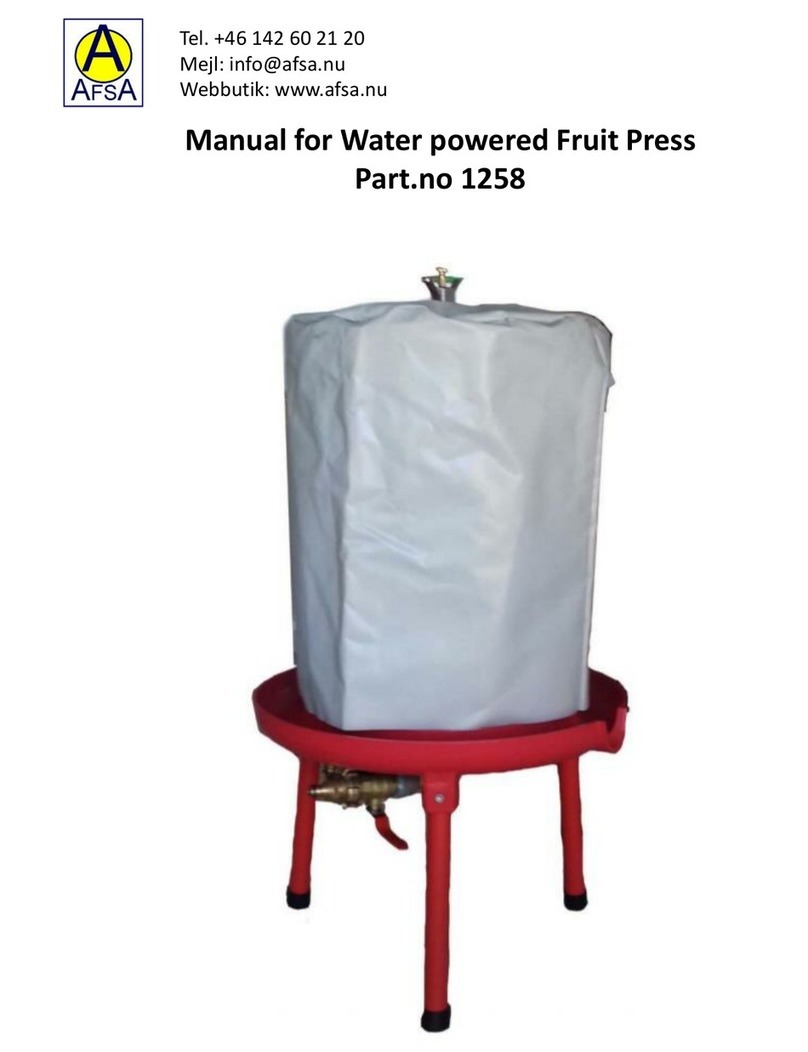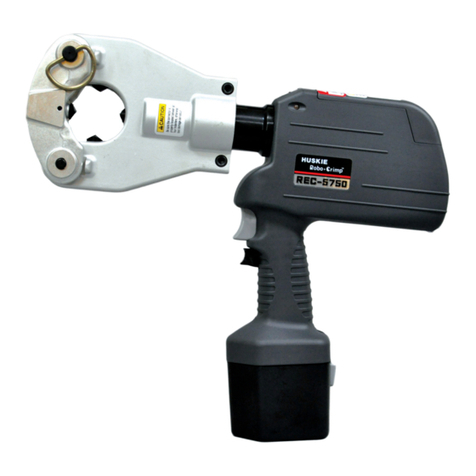SOMMER Maltman 220 User manual

Version: 11.10.2017 Page 1
Operation manual
Operation manual
Maltman 220, Maltman 220 S, Maltman 400, Maltman 400 S,
Maltman 500, Maltman 500 S
Handbuchart manual
Maschine Malt-
man
MaschinenTyp ma-
chine

GENERAL DESCRIPTION
Page 2
Copyright law
This operation manual is a document or instrument in the sense of the Law on Unfair Competition.
The copyright remains with
Egon Sommer Maschinenbau GmbH & Co. KG
Pagenstecherstraße 146
D-49090 Osnabrück
Telefon: +49 (0)541 125085
Telefax: +49 (0)541 129557
E-Mail: service@sommer-maschinenbau.de
Internet: www.sommer-maschinenbau.de
This operation manual is intended for the user/owner of the machine and its staff. It contains texts, pictures and
drawings that, without the express permission of Egon Sommer Maschinenbau GmbH & Co. KG, may not be
reproduced,
disseminated or
disclosed in any other.
Permission is granted for internal use to the user/owner of the machine.
© Copyright Egon Sommer Maschinenbau GmbH & Co. KG 28.02.2018
The manufacturer reserves the right to make technical changes and improvements at any time without prior notice.

GENERAL DESCRIPTION
Page 3
Table of contents
General description....................................................................................................................... 4
Information about this Operation manual ............................................................................... 4
Layout of the Operation manual............................................................................................. 4
Use of the Operation manual................................................................................................. 4
Obligations of the machine owner.......................................................................................... 4
Personnel requirements ........................................................................................................ 5
Intended use ......................................................................................................................... 5
Unintended use ..................................................................................................................... 5
Safety instructions ........................................................................................................................ 6
Safety symbols used in this Operation manual....................................................................... 6
Warning labels on the Machine.............................................................................................. 6
Safety guidelines................................................................................................................... 7
Technical data ............................................................................................................................. 10
Setup and function...................................................................................................................... 11
Safety devices ............................................................................................................................. 12
Shutdown in case of power outage ...................................................................................... 12
Protective grid ..................................................................................................................... 12
Protective cover .................................................................................................................. 12
Transport/Setting up/Assembly of the Machine ........................................................................ 13
Installation and assembly .................................................................................................... 13
6.1.1 Attaching the Machine .......................................................................................... 13
Initial start-up .............................................................................................................................. 14
Connecting the power supply............................................................................................... 14
7.1.1 Check for the correct direction of rotation.............................................................. 14
Operation..................................................................................................................................... 14
Basic checks before and after operations ............................................................................ 14
Operating elements ............................................................................................................. 14
Operating procedure/Crushing cereals ................................................................................ 15
8.3.1 Adjust the feed regulator....................................................................................... 15
8.3.2 Adjusting the crushing gap.................................................................................... 16
8.3.3 Reduce the crushing gap ...................................................................................... 16
8.3.4 Ejecting foreign bodies ......................................................................................... 16
Maintenance and care................................................................................................................. 17
Maintenance schedule......................................................................................................... 17
Special Maintenance Work .................................................................................................. 18
9.2.1 Retightening the V-belt ......................................................................................... 18
9.2.2 Replace the V-belt ................................................................................................ 18
Malfunction.................................................................................................................................. 19
List of malfunctions.............................................................................................................. 19
EC Declaration of Conformity..................................................................................................... 20

GENERAL DESCRIPTION
Page 4
General description
This chapter contains notes on this manual, along with general safety instructions for handling the machine of the
Maltman-series.
The Maltman is referred to as the machine in the following.
Information about this manual
This manual is an integral part of the user documentation for the machine. Observe all instructions, data, and direc-
tives contained in the manual. The manual will help you to operate the manual safely, and with a high level of avail-
ability.
We reserve the right to make changes designed to improve the machine described in the manual at any time with-
out notice.
Layout of the manual
Safety-relevant instructions are identified by the appropriate symbols.
Steps that must be performed in the specified order are enumerated and the results of the steps are shown in ital-
ics.
Example:
1. Step 1 to be performed
Result of step 1
2. Step 2 to be performed
2.1 Sub-step of step 2 to be performed
Use of the manual
The manual is to be supplemented by existing national directives concerning accident prevention and environmen-
tal protection.
Ensure that the manual is always available at the usage site of the machine and in a legible condition.
In addition to the manual and the binding regulations for accident prevention applicable in the country and site of
implementation, the recognised industry-specific rules for safety and professional work must be complied with.
Obligations of the machine owner
The machine user/owner is obliged to only permit persons to work on the machine , who
Observe the basic directives concerning health and safety at work and accident prevention,
Are regularly instructed in difficulties, hazards, and other particular rules of conduct.
The owner/operator undertakes to:
observe and communicate to staff the current mandatory regulations on accident prevention, environmental
protection and handling of dangerous goods in addition to the instructions in this manual, as required by
law.
provide personal protection equipment.
Establish the authority of the machine operator to enable the machine operator to reject third party instruc-
tions that contradict safety considerations.
assure safety-aware work of personnel at regular intervals.
observe legal requirements and rules at the site of the machine.

GENERAL DESCRIPTION
Page 5
Personnel requirements
The machine may only be operated by persons of a minimum age of 16 years.
Before commencing work, all persons tasked with working on the machine undertake to:
observe the basic directives concerning health and safety at work and accident prevention,
Read the safety and warning instructions in this manual and to confirm with their signature that they have
understood them,
Use personal/workplace-specific protective clothing and auxiliary materials that serve occupational safety
while working, where these are required from a safety/technical point of view.
comply with specifications of competence.
Intended use
The machine is used exclusively to process various grain types (such as oats, barley, wheat, maize, spelt, etc.) so
that their form is beneficial for animal feed.
The machine must be operated exclusively within the performance limits stated in chapter 3 "Technical data".
Uses other and beyond this shall be deemed improper and unintended. Egon Sommer Maschinenbau GmbH & Co.
KG will not be held liable for any damage caused by unintended use.
Intended use also includes:
Observing all information and directives in the manual and all accompanying documents.
Observing the mandatory service and maintenance intervals, or the service and maintenance intervals
specified in the manual and applicable documentation.
Unintended use
Unintended use particularly includes:
Using the machine for purposes other than crushing cereals.
Crushing of materials with a high moisture content/that are very sticky will cause them stick to the rollers of
the crusher (exception:) Use of scrapers).
Operating the machine with bridged safety devices.
Operating the machine with incomplete protection.
Operation of the machine by more than one person.
Operating, maintaining and repairing the machine by non-authorised and non-instructed persons.
Operating the machine in an area with a risk of explosion.

SAFETY INSTRUCTIONS
Page 6
!"#$% &' ($ )* +$&,'(
-./
Safety symbols used in this Fehler! Verweisquelle konnte nicht gefunden werden.
DANGER
"DANGER" identifies an immediate danger which can cause severe or even fatal injury.
WARNING
"WARNING" identifies a potentially dangerous situation which can cause severe or even fatal injury.
CAUTION
"CAUTION" identifies a potentially dangerous situation which could to minor injury.
NOTE
"NOTICE" identifies a potentially dangerous situation that can harm property and the environmental.
This signal word is also used for application instructions and other useful information.
-.-
Warning labels on the machine
Fig. 2-1: Warning labels on the machine
Pos. Label Description
1
Warning of hazardous electrical voltage.
2
1
2

SAFETY INSTRUCTIONS
Page 7
2
Risk of drawing in, crushing.
Safety guidelines
DANGER
Risk to persons and the machine!
0
Only qualified and authorised persons are permitted to operate the machine.
0
Only qualified and authorised persons are permitted to operate the machine.
0
Maintain all safety and hazard instructions at and on the machine in a complete and legible condi-
tion!
0
Always exercise care and attention in the entire work area of the machine.
0
Exercise great care when carrying out setup and troubleshooting work requiring the disabling of
safety equipment and/or covers.
0
Dismantled safety equipment must be refitted after completing the work.
0
Avoid any unsafe methods of working.
0
Keep the operating manual available at the machine site at all times.
0
The machine's operator must have read and understood the Operating Instructions.
0
Stop the machine immediately and report the fault to the responsible department/person when
safety-relevant modifications are made to the machine line or the operating behaviour of the ma-
chine changes!
0
Stop the machine immediately and report the fault to the appropriate office/person if safety-relevant
modifications have been made or the operating behaviour of the machine changes!
0
The applicable worker's compensation association (BG) rules for Occupational Safety and Health.
0
Do not remove or modify safety devices and warning signs from the machine.
0
Do not convert machine components without our approval.
0
Access to the workplace on the machine is not permitted for unauthorised persons.
0
Always exercise care and attention in the entire work area of the machine.
RISKS
Risk of electric shock!
Leave the danger area immediately if electricity leaks to defective components and wiring.
Only have electrical systems installed on machine components by an expert and accord-
ing to the wiring diagram.
To protect the machine the power supply must be protected with a residual current circuit
breaker provided by the customer.
RISKS
Danger of injury due to unexpected actuation!
Switch off the machine before setup work, maintenance, repairs and troubleshooting, and
protect against unexpected restarting.
Disconnect the mains plug of the machine.
DANGER

SAFETY INSTRUCTIONS
Page 8
Risk of explosion!
The machine is not explosion-protected as a factory standard. Accumulations of dust can cause an ex-
plosive atmosphere.
0
Do not use the machine in areas with a potentially explosive atmosphere.
0
Ensure sufficient ventilation of the room, as crushing causes dust accumulations.
0
Ensure good ventilation of the machine to avoid an explosive atmosphere building up.
0
Regularly clean the machine (especially the drive motor) to avoid a layer of dust accumulating.
DANGER
Risk of fire due to V-belt slipping!
Slipping belts can overheat and cause fires
0
Make sure the V-belts are tensioned correctly.
0
Comply with maintenance intervals. First check of V-belt tension after 10-20 hours of operation,
then extend the interval gradually to 3-6 months.
WARNING
Risk of injury due to trapping or pulling in!
0
Do not wear loose-fitting clothing.
0
Do not wear ties, necklaces, shawls, scarves or similar.
0
Tie back long hair (e.g., use a hair net).
WARNING
Risk of crushing, drawing in!
In particular, on the pinch rollers and drive parts (belts and gears, etc.).
0
Do not reach into rotating/moving machine elements or devices.
0
Do not reach into the outlet while the machine is running.
WARNING
Parts being ejected!
There may be foreign bodies in the milled material (e.g. ball bearings). During crushing, they may be
propelled upward and out of the hopper with unexpected force by the pinch rollers, thus causing serious
injury.
0
Do not bend over the feed hopper on the machine during operation.
0
Remove any foreign bodies that accumulate from the machine (e.g. foreign body ejector).
WARNING
Risk of injury though noise!
0
Use the mandatory hearing protection.

SAFETY INSTRUCTIONS
Page 9
WARNING
Risk of injury due to dust!
0
Ensure good supply and exhaust ventilation of the workplace.
0
Wear the prescribed dust mask/air filter mask if required.
WARNING
Risks of damage to the machine!
0
Attach the machine at operation height.
0
Do not firmly attach hopper enlargements (e.g., avoid welding on).
0
In case of feeding from a silo: Allow the silo outlet to protrude by 1-2 cm into the hopper of the grain
crusher. It must be possible to pull the grain crusher out from below the silo.
0
When using feed wagons/catchment containers, maintain a short distance to the machine outlet;
otherwise the milled material might drop out next to the catchment container.
CAUTION
Risk of injury during filling
Filling of materials for rolling goods from sacks into the grain crusher may cause back injuries due to
incorrect lifting techniques due to lifting heavy loads.
0
Pay attention to correct lifting techniques when lifting heavy loads.
NOTE
Pollution!
0
Dispose of replaced parts, consumables and auxiliary materials in a safe and environmentally
friendly manner.
NOTE
Possible damage due to rain and moisture!
0
Do not set up the machine outdoors without rain and moisture protection. There is a risk of very se-
rious damage to the electrical components and bearings.
NOTE
Extended periods of operation in the wrong direction of rotation!
Extended periods of machine operation in the wrong direction of rotation, especially under load (milling
materials on the rollers) can cause damage to the machine.
NOTE
Use only original spare parts.
Only use materials and original spare parts recommended by the manufacturer.

TECHNICAL DATA
Page 10
1
Technical data
Machine Malt mill Malt mill Malt mill
Type Maltman 220 & 220 S Maltman 400 & 400 S Maltman 550 & 550 S
Grain throughput [kg/h]
(depending on the degree of
crushing and type and humidity
of the
material to be crushed)
approx. 300 – 400
approx. 600 – 800
approx. 900 – 1000
Motor output [kW] 2,2 4,0 5,5
Electrical connection 400 V, 3-phase 400 V, 3-phase 400 V, 3-phase
Weight [kg] 112 144 170
Dimensions [cm] (W x H x D) 60 x 58,5 x 41
65 x 58,5 x 53
70 x 58,5 x 56
Degree of protection IP 54 IP 54 IP 54
Emission sound pressure level
at idle speed [dB(A)] 70.2 71,9 72,3
Permissible materials for pro-
cessing
Grain (such as malt oats,
barley, etc.)
See before See before
Crushing gap [mm] 0 – 2.6 0 – 3,4 0 – 3,4
23445678597 :;<=>?
How loud is the machine when crushing
material? Is information on typical milling material available?
In case of a sound pressure level above 80 dB(A), the sound power
level LW must also be stated.

SETUP AND FUNCTION
Page 11
@
#$*A !'B "*'+$&,'
The machine crushes various cereals (oats, barley, wheat, corn, spelt, etc.). The operator fills the material to be
crushed into the feed hopper (3). From there, it flows in a metered manner onto the two powered pinch rollers
which crush the material between them. The crushing force depends on the size of the material to be crushed rela-
tive to the gap set between the pinch rollers. The crushed end product drops out of the outlet opening on the under-
side of the machine.
Fig. 4-1: Front side of machine Fig. 4-2: Rear side of machine
Pos. Description Function
1 Electronics cabinet Houses the main switch with motor protection switch, ammeter with load
and overload indicator and plug.
2 Drive motor Drives the machine
3 Hopper Receives the material to be crushed and feeds it to the pinch rollers.
4 Feed control Sets the feed gap in the hopper.
5 Outlet angle bracket frame Holds the catchment sacks. Outlet for crushed grain.
6 Type plate Shows the machine data.
7 Foreign body ejector Removes foreign bodies from the pinch rollers.
8 Crushing gap adjustment Sets the width of the crushing gap between the pinch rollers.
9 Suspension brackets Attach the machine to the holder (wall hanger bracket, stand).
10 Wall hanger bracket Holds the machine
11* Protective grille Protects against reaching in.
a Main switch Switches the machine on/off
b Ammeter Shows the machine load.
*Not shown in the figure.
5
1
2
4
3
6
7
8
9
10
a
b
11
11 11
11

SAFETY DEVICES
Page 12
C
Safety devices
Shutdown in case of power outage
If the power supply is lost by a fuse being tripped, the on/off switch of the machine assumes the off position. This
ensures that the machine will not automatically restart when the power supply is restored. The machine must be
switched on again by pressing the button.
The machine can only be switched on when the machine is connected to a power supply.
Protective grid
Protective grilles are located:
In the hopper as reach-in protection above the feed to the pinch rollers.
Above the discharge side to prevent reaching into the pinch rollers from underneath.
The protective grilles are removable with tools to facilitate cleaning and maintenance. The protective grilles must be
bolted on for operation with the machine.
Protective cover
Protective covers are located:
Above the belt drive,
Above the gearbox on the pinch rollers
Above the fan on the drive motor
The protective covers are removable with tools to facilitate cleaning and maintenance. The protective covers must
be in place during operation.

TRANSPORT/SETTING UP/ASSEMBLY OF THE
MACHINE
Page 13
D
E)!'(A,)$F #$$&'G *AFH((#IJ K% ," $L# I!+L&'#
M./
Installation and assembly
6.1.1 Attaching the machine
Fig. 6-1: machine Attaching to the head plate of the stand
Requirements:
NOTE
Installation of the wall hanger bracket
N
The wall must be able to accommodate the weight of the machine permanently (see sec-
tion 3 "Technical data").
O
The wall hanger bracket is mounted or there is a gantry stand (optional).
O
The machine is switched off
O
The machine is not connected to the power supply.
Steps:
1. Attach the machine via its rear bracket to the wall hanger bracket or the head plate of the stand.

INITIAL START-UP
Page 14
P
Initial start-up
Connecting the power supply
Requirements:
The machine is mounted on the wall/a gantry stand.
Steps:
1. Connect the machine to the wall outlet with the 16 A-CEE device connector using an extension cable with
phase shifter.
7.1.1 Check for the correct direction of rotation
Requirements:
The machine is connected to a power outlet.
Steps:
1. Switch on the machine and then switch off again immediately.
2. Watch the fan blades through the motor ventilation grille.
An arrow above the ventilation grille indicates the correct direction of rotation.
3. In case of an incorrect direction of rotation, rotate the phase inverter in the extension cable through two
phases (no electrician required).
Q
Operation
The machine must only be deployed for its intended use (see Section 1.6 "Intended use").
The machine is operated in manual mode.
R
Basic checks before and after operations
Familiarise yourself with your workplace before starting work. You must check the machine for signs of visible de-
fects at least once a day (visual check). The intervals for inspection and maintenance work as found in section 9
"Maintenance and care" must be observed.
Before switching on the machine and during operation, monitor the whole machine constantly for irregularities. The
following features may indicate irregularities when the control system and the machine are switched on:
increased noise, noise occurring at irregular intervals/unusual noises.
Unusual smells.
Smoke development.
Diminished performance during operation.
Immobilise the machine immediately upon the first signs of any of the above issues. Inform the person responsible
immediately in order to evaluate the technical status. If a failure is anticipated due to the damage, perform repairs
without delay.
R
Operating elements
The Operating elements are described in section 4 "Setup and function".

OPERATION
Page 15
R
Operating procedure/Crushing cereals
Requirements:
The machine is connected to the power supply.
The machine is switched off
The inlet gate is fully closed.
There is no milling material on the pinch rollers.
Steps:
NOTE
Stationary pinch rollers!
There must be no milling material on or between the pinch rollers while the rollers are stationary. Al-
ways close the feed gate first, and then fill the funnel with milling material.
1. Fill the milling material into the hopper or silo feeder.
2. Attach a catchment sack at the machine discharge or a catchment container below machine.
3. Switch on the machine at the main switch.
Allow the pinch rollers to accelerate to final speed.
4. Open the feed gate.
Grain runs onto the pinch rollers and is crushed.
NOTE
machine overload. Red zone on ammeter!
The red zone indicates a motor overload. Avoid permanent overload of the motor. It is not a problem if
the pointer briefly deflects into the red zone.
5. Close the feed gate and allow the rollers to run empty.
6. Switch off the machine at the main switch.
8.3.1 Adjust the feed regulator
Increasing and reducing the milling material feed:
1. Push the wheel of the feed regulator towars the machine

OPERATION
Page 16
8.3.2 Adjusting the crushing gap
Adjust the gap to match the desired results and the size of the material to be crushed.
NOTE
Damage caused by tools!
Only adjust the crushing gap manually. The use of tools can cause damage to the adjustment gear.
Requirements:
The machine is switched off
The feed gate is closed.
There is no milling material on the pinch rollers.
Steps:
1. Adjust the crushing gap; to do so:
1.1. Push the adjustment wheel towards the machine and then turn the wheel
8.3.3 Reduce the crushing gap
NOTE
Damage caused by accumulations of milling material!
Clogging of the outlet (e.g., due to backlogs) can result in damage to the machine.
Replace catchment sacks or catchment containers regularly with empty ones.
Verify that
The rolled material can drop freely downwards out of the machine.
The rolled material does not accumulate up to the bottom edge of the machine outlet.
8.3.4 Ejecting foreign bodies
Remove foreign bodies (e.g., small stones) from the pinch rollers.
Requirements:
The machine is running.
Steps:
1. Pull the handle on the foreign body ejector while the machine is running.

MAINTENANCE AND CARE
Page 17
S
Maintenance and care
T
Maintenance schedule
Machine part Work to be performed Interval
Overall machine Check the on/off switch function In every shift
Check for orderly condition and cleanliness of the machine. If
necessary, clean the machine.
In every shift
Check function. In every shift
Check all screws and tighten as needed. Weekly
Electrical equipment Check the electrical equipment. Replace damaged
switches/cables immediately.
Every six months/
as needed
V-belt Check the tension, retension. Initally after 10-20 h
Every 3-6 months
Check for damage/wear. Every 3-6 months
Pinch rollers Remove foreign bodies from the pinch rollers. As required
Hopper/run-in grille/magnets Remove foreign bodies (e.g. straw).
Remove metal objects from the magnets.
As required
Depends greatly on
the material to be
crushed.
Protective grilles and safety co-
vers
Clean grilles. As required
NOTE
Do not clean with running water!
Do not clean the machine with running water (e.g., water hose, pressure cleaner).

MAINTENANCE AND CARE
Page 18
U.-
Special Maintenance Work
9.2.1 Retightening the V-belt
Requirements:
O
The machine is switched off
O
The machine is disconnected from power supply (unplugged).
Steps:
1. Remove the V-belt guard.
Fig. 9-1: V-belt tensioning screw between motor plate and machine housing
2. To tension the V-belt loosen the clamping screw between motor plate and machine housing. Tension the
V-belt until the back of the belt begins to bulge inward on the motor side pulley.
3. Fit the V-belt guard.
9.2.2 Replace the V-belt
NOTE
Always replace the complete V-belt set!
If one V-belt needs to be changed, always replace the complete V-belt set.
Requirements:
O
The machine is switched off
O
The machine is disconnected from power supply (mains plug is unplugged).
Steps:
1. Remove the V-belt guard.
2. Tighten the tensioning screw between motor plate and machine housing
V-belts are relaxed.
3. Remove worn V belt.
4. Fit new V belts individually.
4.1 Lay the V-belt over the outside groove on the small, motor-side pulley.
4.2 Pull the V-belt over the outside groove on the large pulley.
4.3 Push the V-belt towards the inside groove by groove.
4.4 Identical procedure for remaining V-belts.

MALFUNCTION
Page 19
V
Malfunction
W
List of malfunctions
Symptoms Cause Measure
Poor machine perfor-
mance/grain not being pro-
cessed
Rollers blocked See section 8.3.2 "Adjusting the crush-
ing gap"
V-belt loose, warn or defective. See section 9.2.1 "Retightening the V-
belt" or section 9.2.2 "Replace the V-
belt".
Incorrect roller travel direction. See section 7.1 "Connecting the power
supply"
Clogged hopper, foreign bodies
on the rollers.
Remove foreign bodies from intake,
protective grilles or rollers.
Rollers worn. Contact the manufacturer.
Poor motor performance: Run-
ning on 2 phases
Call in an electrician
machine with a substantial
performance drop
Clogged hopper, foreign bodies
on the rollers.
Remove foreign bodies from intake,
protective grilles or rollers.
Poor motor performance: Run-
ning on 2 phases
Call in an electrician
Rollers not running in sync. Contact the manufacturer.
Rollers worn. Contact the manufacturer.
machine only partially
crushing the material
Worn partition panels. Fit new partition panels (see Fig. 10-1:
Partition panels on the face sides of
the pinch rollers).
Foreign body ejector is
jammed/defective
Remove foreign body preventing the
flap from closing.
Rollers worn. Contact the manufacturer.
Rollers not running in sync. Contact the manufacturer.
machine not crushing the
material at all
Incorrect roller travel direction. See section 7.1 "Connecting the power
supply"
machine smells of burning
rubber
V-belt loose, warn or defective. See section 9.2.1 "Retightening the V-
belt" or section 9.2.2 "Replace the V-
belt".
Motor humming, ammeter
fully deflected at idle speed
Poor motor performance: Run-
ning on 2 phases
Call in an electrician

EC DECLARATION OF CONFORMITY
Page 20
Fig. 10-1: Partition panels on the face sides of the pinch rollers
NOTE
Make sure the partition panels are correctly fitted!
The partition panels must be close to the rollers but must not touch them.
XX
YZ [#+K!)!$&, ' ," Z, '",)I&$%
In line with the EU Machinery Directive 2006/42/EC, Annex II A
The Manufacturer:
Egon Sommer Maschinenbau GmbH & Co. KG
Pagenstecherstraße 146
D
-
49090 Osnabrück
hereby confirms that the following product: Maltill Maltman
Serial number: XXXXX
Year of manufacture:: 2018
complies with all pertinent provisions of the Machinery Directive 2006/42/EC. The machine also complies with all
provisions of EMC Directive 2004/108/EC.
The following harmonised standards were applied:
EN 349:1993+A1:2008 Safety of machinery - Minimum gaps to avoid crushing of parts of the hu-
man body
EN ISO 12100:2010 Safety of machinery - General principles for design - Risk assessment and
risk reduction (ISO 12100:2010)
EN ISO 13849-1:2015 Safety of machinery - Safety-related parts of control systems -- Part 1:
General principles for design (ISO 13849-1:2015)
EN ISO 13850:2015 Safety of machinery – Emergency stop – Principles for design (ISO
13850:2015)
EN 60204-1:2006 Safety of machinery – Electrical Equipment of Machines –
part 1: General requirements
Representative for the configuration of the technical documentation: Egon Sommer Maschinenbau GmbH &
Co.KG, Pagenstecherstraße 146, D – 49090 Osnabrück
Osnabrück, 28.02.2018
Place/date Martin Esrom, Managing Director
\]^^_`ab_ca defghi
jklmn omnpqr kstum n
This manual suits for next models
5
Table of contents
